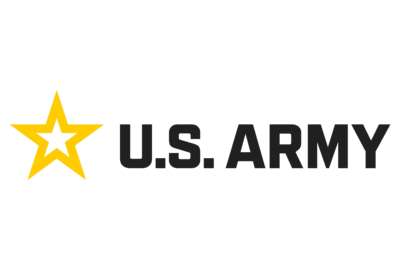
The Army studies its sexual harassment problem, but could do more about it
The top echelon is aware the U.S. Army has a problem with sexual harassment, sexual abuse, substance-use disorders, and suicide. In fact, since 2019, the Army has...
The top echelon is aware the U.S. Army has a problem with sexual harassment, sexual abuse, substance-use disorders, and suicide. In fact, since 2019, the Army has produced nearly 50 studies of these problems. But most of those studies do not include specific recommendations for dealing with these problems. That’s according to an internal meta study done by the Army Audit Agency, and obtained by POGO: the Project on Government Oversight. To learn more about the meta study, Federal Drive with Tom Temin spoke with POGO Senior Investigator Nick Schwellenbach.
Interview Transcript:
Tom Temin And Nick, it looks like they did a study of studies to find out that, great, we’ve got a lot of admiring of these problems in the Army, but not much guidance on what to do about them. Is that the general thing that’s going on here?
Nick Schwellenbach Yeah, you’ve got the gist of it. And often I’m skeptical of studying studies, but this one I think is useful because it found that many of these studies aren’t generating what it deemed “actionable recommendations,” recommendations to change policies, practices, rules, collect more data, for instance. And it also found that among the few studies that did have actionable recommendations over a three year period of 2019 through the end of fiscal year 2022, the Army had taken action on none of those.
Tom Temin Okay. So these cover a range of issues. The sexual harassment, sexual abuse has been of great interest to Congress. I mean, there’s a lot of pressure on the military services to finally do something about these problems. What did the study of studies find that the Army audit agency did?
Nick Schwellenbach Well, so this audit looked at research on, “soldiers’ harmful behaviors.” And you mentioned many of those drug abuse suicides, sexual harassment, sexual assault, domestic abuse. And it looked at how the Army’s overseeing this sprawling research portfolio. And I looked at 47 studies, as you mentioned earlier, and it looked at the organizations funding the studies. These are different parts of the Army. It looked to see if they were tracking recommendations, if any, that came out of the studies. It looked to see if these different Army sponsoring organizations were talking to each other so they weren’t unnecessarily duplicating research to get the most bang for the buck, if you will, from the research dollars flowing into various people who are conducting these studies. And they were also looking to see, and this is more of a minor part of the Army audit agency’s work, but they also look to see if the research lined up with the Army’s prevention strategy. The Army’s prevention strategy aims to have a more sort of comprehensive approach to preventing these problems. And the Army audit agency found that most of the research funded really looked at sort of the moments or the days leading up to the suicide of sexual assault and trying to intervene, but more at the last minute. They found a disconnect there. And to me, one of the more galling findings from this Army audit agency report is that back in 2010, the Army commissioned a high profile study on suicide inside the Army’s ranks. And this Army report, which got a lot of press attention at the time, said the Army should improve its research oversight, centralize governance of research so it can avoid duplicating studies, so it can track recommendations. And more than 12 years later, the Army hasn’t done that yet.
Tom Temin Right. So there’s kind of a sclerosis that is set in on the army, which I guess to its credit, it’s aware of the issues and they have been pointed out to the Army and the Army’s got to be aware of it, the suicides in the sexual assaults, but it seems stuck in study rather than moving forward in action. And I guess my question. The Army audit agency, how does that differ from the inspector general of the Army, which seems to be a logical place for this kind of study to take place?
Nick Schwellenbach Yeah, the Defense Department has what we know as the Defense Department inspector general, that’s a statutory inspector general like IGs that we see throughout the federal government. And then each of the military services has their own inspector general, which is a military service IG. And the roots of those go back actually to the Revolutionary War. There was an IG back in the original Revolutionary Army and the military service system had these kinds of internal watchdogs, but they tend to be what are known as command watchdogs. They report to sort of the leadership, but then the services also have audit agencies and the IGs and audit agencies sort of have a division of labor. The IG’s tend to do investigations into individual allegations of misconduct, whereas the audit agencies look at more broad reviews of, are policies being followed, look at more systemic practices. And so you have the Army Audit agency, you have the Naval Audit Service and you have the Air Force Audit Agency as well.
Tom Temin Got it. We are speaking with Nick Schwellenbach. He is senior investigator at the Project on Government Oversight. So this latest Army Audit Agency study of the studies of sexual harassment, abuse, suicide, etc. Drug use was not publicly released and you had to get it on a FOIA. It seems like that would be something they would want to get out.
Nick Schwellenbach Yeah, I mean, I have long thought that the Military Service Audit Agency should be proactively making their reports public. The Naval Audit Service and the Air Force Audit Agency at least provide a public listing of their reports. And then you can file a Freedom of Information Act request for the reports that you see on their public lists. The Army Audit Agency doesn’t have a public list at all, so I FOIA-ed a list of Army Audit Agency’s reports. And when I saw this on that list, I then filed a subsequent open records request to get this audit report.
Tom Temin And they did provide it. They weren’t hiding it, exactly. They were just not making it public.
Nick Schwellenbach Yeah, there was no, in my opinion, active concealment of this report. It just isn’t their practice to make these reports public or a listing of their reports public. And to their credit, they’ve processed my Freedom of Information Act request very quickly. I mean, I would say gold standard in terms of federal agency processing of FOIA requests. So it may be that they are also a little known agency that doesn’t receive many FOIA requests, but they were quite prompt in processing all of my requests for records.
Tom Temin And one of the interesting twists in this was that the Army discovered that the other reports that had not made very many recommendations for fixing these problems didn’t necessarily set out to create recommendations. They had a totally different orientation on the nature of the studies that were being done. That is as almost scientific, or looks at as opposed to programmatic attempts to get at the root of the problem. They were looking at it almost academically and detached from recommendations.
Nick Schwellenbach Yeah, I mean, I think it would be unreasonable to expect 100% of studies funded by the Army to always lead to actionable recommendations. Sometimes they’re doing more of what’s known as sort of foundational research, trying to understand the nature of a problem. And often their conclusion is we don’t have enough data to reach a definitive conclusion or to offer an informed recommendation. So I think 100% is maybe unreasonable. But what this Army Audit Agency found was 89% of the 47 studies funded over a three year period, 89% had no actionable recommendations. That is a strikingly high percentage of studies that have no recommendations to deal with these very live, very severe problems that the Army’s facing. I mean, people’s lives are being lost. There’s a really severe sexual assault problem, especially in the Army. Some of the most recent data points are very troubling concerning the Army as well as in the suicide domain. It has the highest rate of suicide among active duty members than any of the armed services by a wide margin, I should add. More than double that of the Navy or Air Force and 40 or about 50% higher than the Marine Corps. So there are these big problems, and these aren’t new problems either. We’ve been studying these issues for more than 20 years now. I mentioned a 2010 report that flagged some serious oversight problems with suicide research. So at a certain point how much foundational research are we doing versus pivoting to doing something about what we know. And so that number, 89%, in my opinion, is strikingly high and it seems strikingly high to the Army audit agency authors as well.
Tom Temin So this then could prompt the Army to maybe come up with recommendations for itself to get after some of these things more numerous and more comprehensive recommendations than it’s had to date.
Nick Schwellenbach Yeah. So the Army, in their response to the audit agency, said we will address these problems by the end of fiscal year 2024, so the end of September of next year. So the Army is pledging to do something about this. But again, the Army has made pledges before and there have been recommendations in the past. I mentioned those from more than 12 years ago. So I think it’s really up to Congress to really hold the Army’s feet to the fire on these issues and make sure it’s doing something about it. So this is just a really a slice of the Army’s response to these various internal personnel crises. But it’s a vital part of the response to have data-driven, research backed solutions to these problems.
Copyright © 2025 Federal News Network. All rights reserved. This website is not intended for users located within the European Economic Area.
Tom Temin is host of the Federal Drive and has been providing insight on federal technology and management issues for more than 30 years.
Follow @tteminWFED





